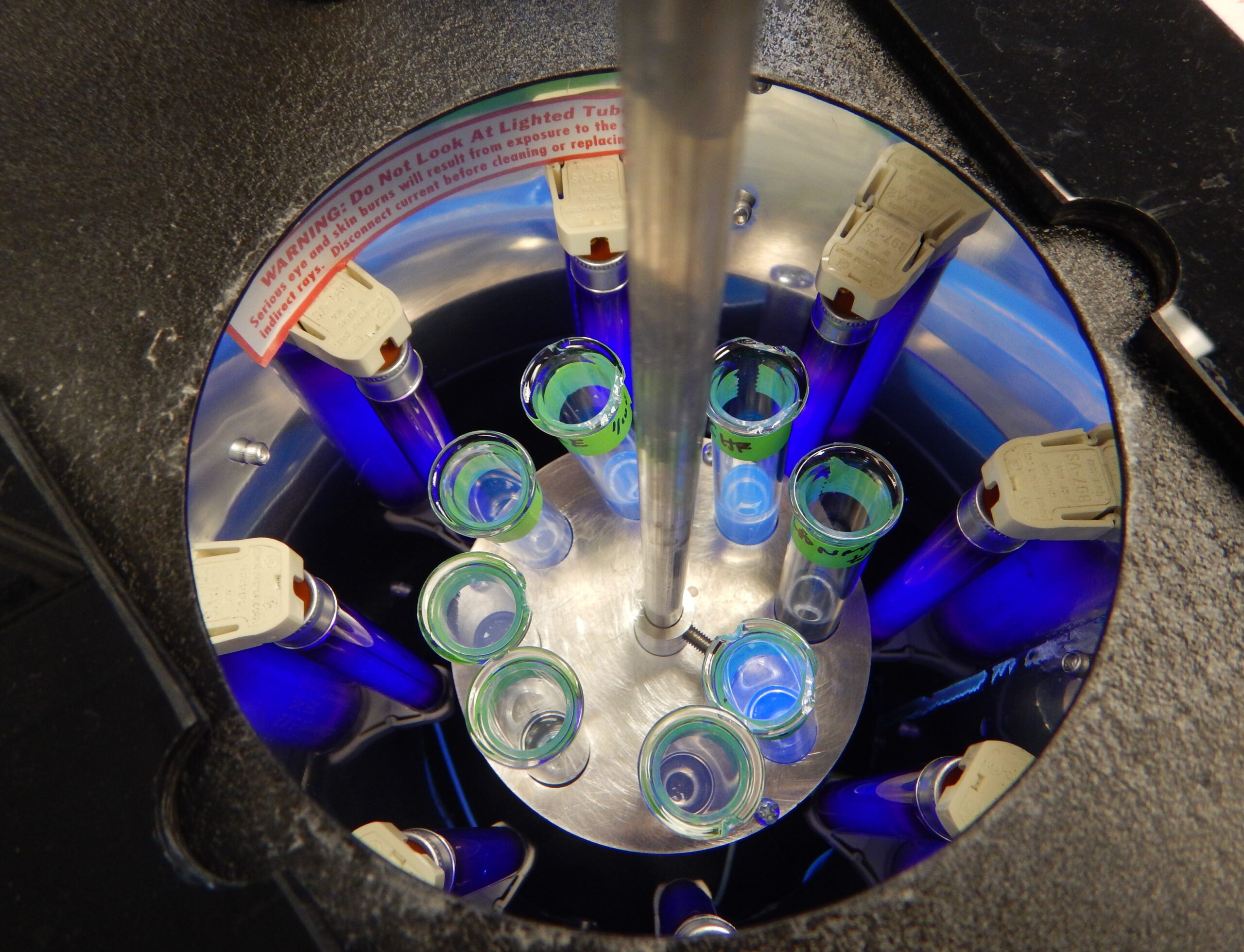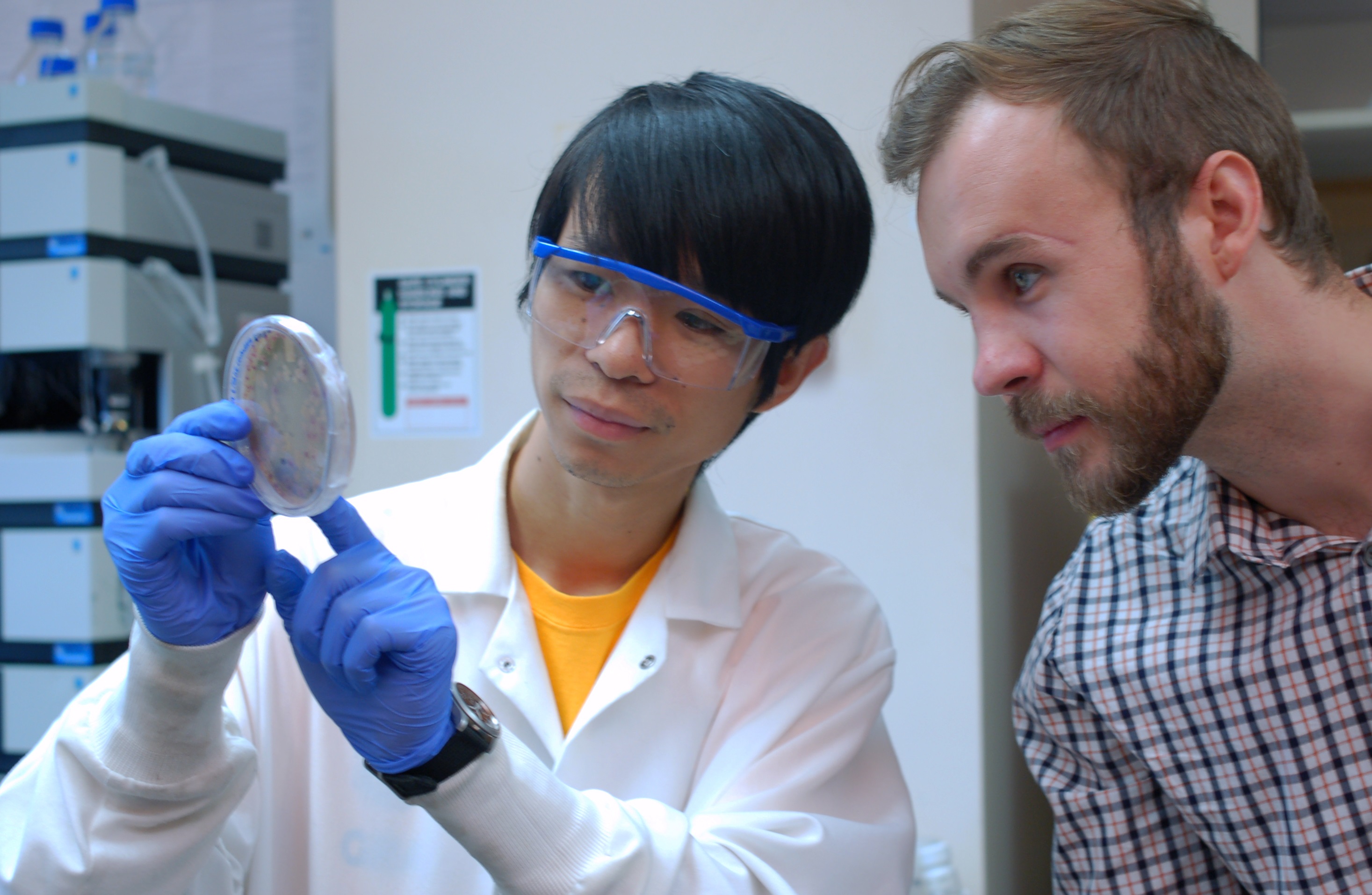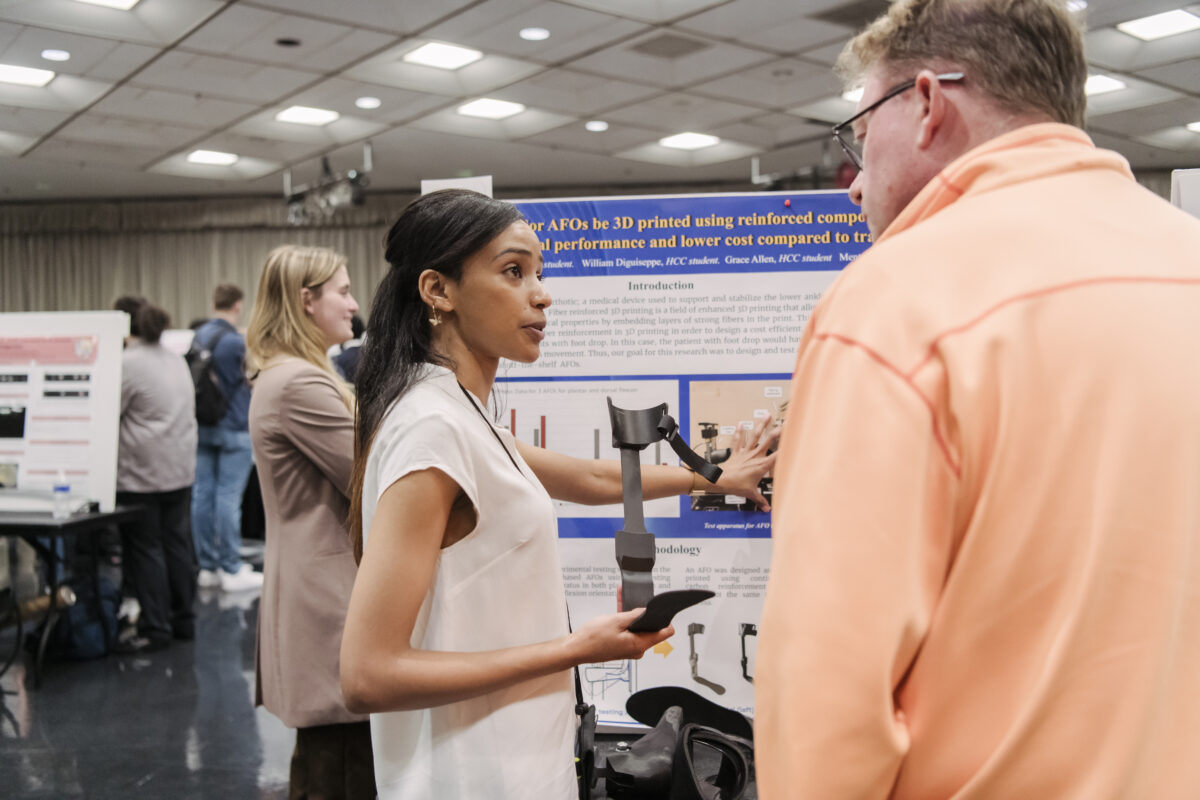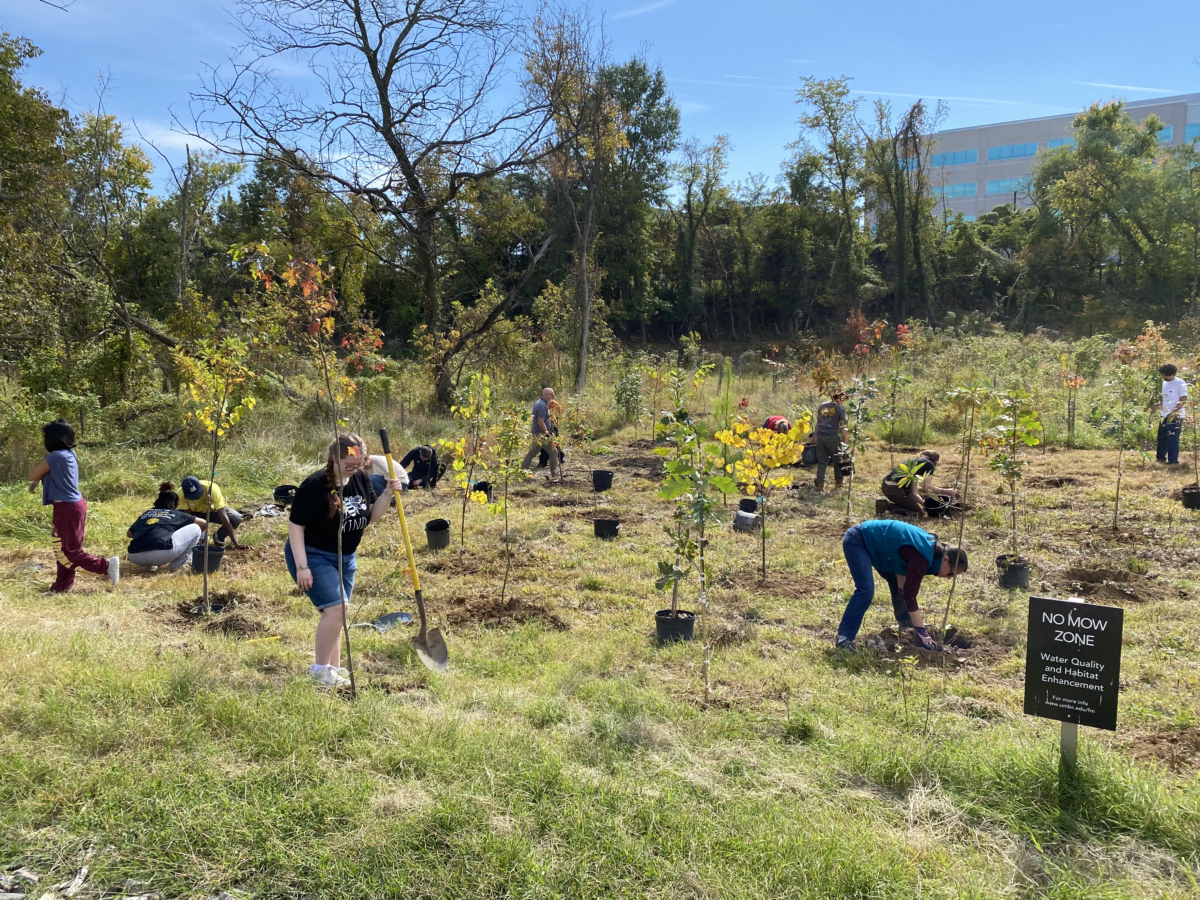The National Science Foundation has recognized Lee Blaney, assistant professor of chemical, biochemical, and environmental engineering (CBEE), as a tremendously promising researcher in concurrently funding three projects that work to reimagine waste streams as important resources and investigate threats from toxic contaminants.
The grant funding, totaling more than $800,000, will support Blaney’s work in the areas of environmental engineering, environmental sustainability, and environmental chemical sciences. The three projects focus on sustainably recovering phosphorus from agricultural waste, the photodegradation of organometallic compounds in water, and understanding how three antibiotic classes react when exposed to UV-based processes. Blaney began receiving funding for all three grants within the two-month period of July 1-September 1, 2015.
Blaney’s environmental engineering research lab focuses on the detection, fate, and transport of contaminants of emerging concern (CECs), such as pharmaceuticals, personal care products, hormones and antibiotics. Many of the projects that his group works on are centered on detecting CECs in water and wastewater, and removing them through various treatment processes.
“These projects build into a concept that we are calling ‘emerging contaminants and resources,’” says Blaney. “The general idea is that the products that we use everyday, and the wastes that we generate everyday, contain hidden threats and opportunities.”
Blaney’s interest in this topic stems from a gap he has seen in environmental research over the last few decades, where substantial data is available on the toxicity of inorganic metals like arsenic and tin, but much less is known about the toxicity of organometallics. In his lab, Blaney studies the impact that organometallics, including platinum and selenium, have on the environment.
He explains that several public health issues are related to his work and research. “Antibacterial resistance is widely viewed as a global challenge to public health. Each year, there are more cases of multi-drug resistant superbugs,” Blaney says. “Ultimately, we hope that this work will result in improved guidance on removal of antibiotics in water and wastewater treatment plants.”
Blaney suggests a paradigm shift is on the horizon that will impact current waste management practices, in Maryland, nationally, and globally. “We envision every ‘waste’ stream as a ‘resource’ stream,” he says, thinking particularly of his work on Maryland’s Eastern shore with phosphorus from poultry litter, which can be seen as both a contaminant and a vital nutrient.
Because of high levels of phosphorus in Eastern shore soil, due to usage of large quantities of poultry litter as fertilizer, a significant amount of phosphorus is washed into nearby bodies of water. Removing excess phosphorus from the litter would reduce the amount of phosphorus in runoff and also isolate a soil nutrient that could be sold to farmers in need of phosphorus-rich fertilizer. “The project will facilitate development of a sustainable source of phosphorus and contribute to water, food, and economic security,” Blaney says.
The grants will also enable more graduate and undergraduate students at UMBC to contribute directly to hands-on, high-impact research through positions in the Blaney Lab. Whether working with students in his lab, analyzing findings, or collaborating with farmers and partners in business or government, Blaney keeps his eye on the big picture, how “the research that we are pursuing will help to ensure sustainable development and protection of human and ecological health.”
Images: Equipment in Lee Blaney’s lab (top); Lee Blaney and Ke He, chemical and biochemical engineering PhD candidate, study a sample in the lab (bottom). Photos by Tim Ford, coordinator of illustrative services in the biological sciences department at UMBC.





